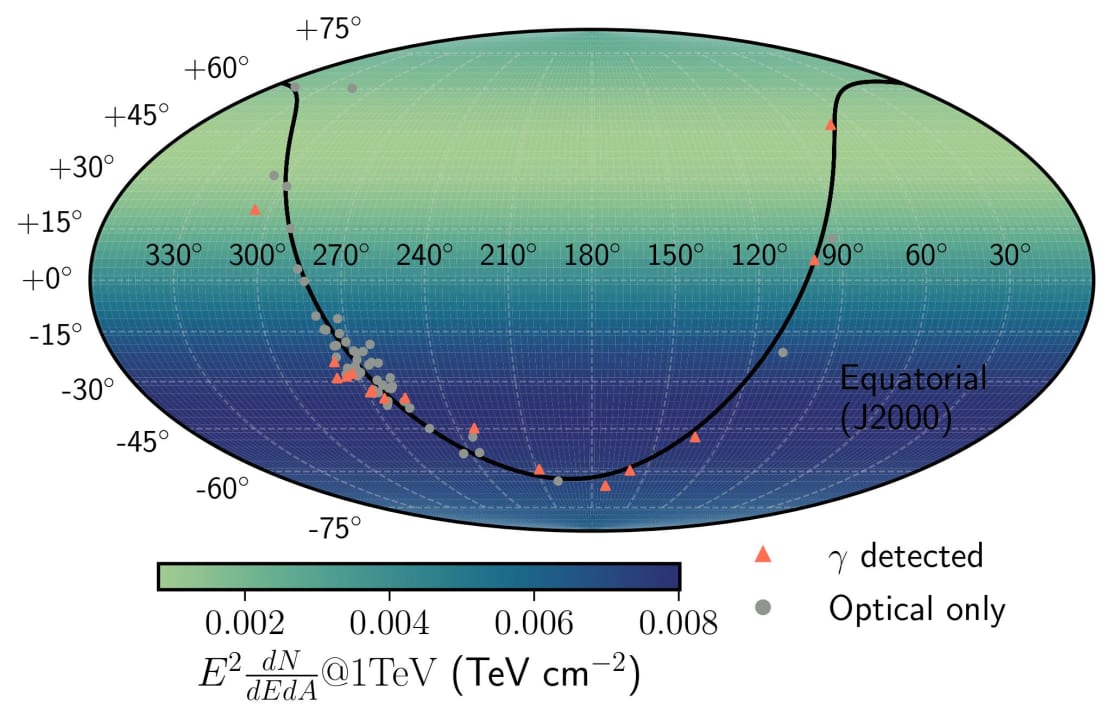White dwarfs are very dense, compact objects that are one of the possibilities for the final evolutionary state of stars. If they happen to be in a binary system with another companion star, the white dwarf may pull material from the companion star onto its surface. In this case, if enough material is accumulated, a nuclear reaction may occur on the surface of the white dwarf, causing a luminous burst of photons called a nova. Historically, astronomers believed they were seeing stars being born, hence the name, although we now know that is not the case. In the past decade, GeV and even TeV gamma rays were discovered from novae, suggesting that neutrinos—neutral, nearly massless cosmic messengers—could originate from novae as well.
In a paper recently submitted to The Astrophysical Journal, the IceCube Collaboration presents its first search for neutrinos from novae using a subarray of the IceCube Neutrino Observatory, a gigaton-scale detector operating at the South Pole. Although significant emission from novae was not found, IceCube set the first observational upper limits on neutrino emission from novae.

According to Justin Vandenbroucke, professor of physics at the University of Wisconsin–Madison and one of the study leads, “Novae, the little cousins of supernovae, are one of the longest known types of astrophysical transient. The discovery that they produce gamma rays was a huge surprise. Our neutrino analyses are starting to add to the modern understanding of these historical phenomena.”
Researchers carried out two analyses: one that looked for neutrinos from each recorded nova observed in gamma rays and a “stacking” analysis that collected all data for each nova in a one-day window around its emission, allowing them to look for neutrino emission from all the novae at once. The two analyses used DeepCore, a subarray of IceCube that was optimized for neutrino oscillation physics and dark matter searches.
As this study illustrates, DeepCore can also be used to lower the energy threshold in searches for astrophysical neutrino sources. Compared to many other astrophysical sources IceCube has analyzed, neutrinos from novae are expected to occur at lower energies due to the gamma rays we see; thus, DeepCore was well suited for this analysis. The sample of neutrinos used for this analysis was based on one initially developed for neutrino oscillation studies and will be valuable for searching for GeV neutrinos from other astrophysical sources, including gamma-ray bursts and gravitational wave sources. In addition to the nova analyses, the paper provides a detailed description of how this new event sample can be used for neutrino astrophysics analysis more generally.
Even though researchers did not find significant neutrino emission from novae from either analysis, they set the first upper limits on such emission.
“The IceCube Upgrade and IceCube-Gen2 will be very exciting for continuing the search for neutrinos from novae,” said Jessie Thwaites, a physics PhD student at the University of Wisconsin–Madison and one of the study leads. “With more data processing, we can also look at an additional nova, RS Ophiuchi, which had an outburst in 2021 with energies all the way up to TeV.”
+ info “Search for sub-TeV Neutrino Emission from Novae with IceCube-DeepCore,” IceCube Collaboration: R. Abbasi et al., The Astrophysical Journal 953 (2023) 2, 160, iopscience.iop.org, arXiv